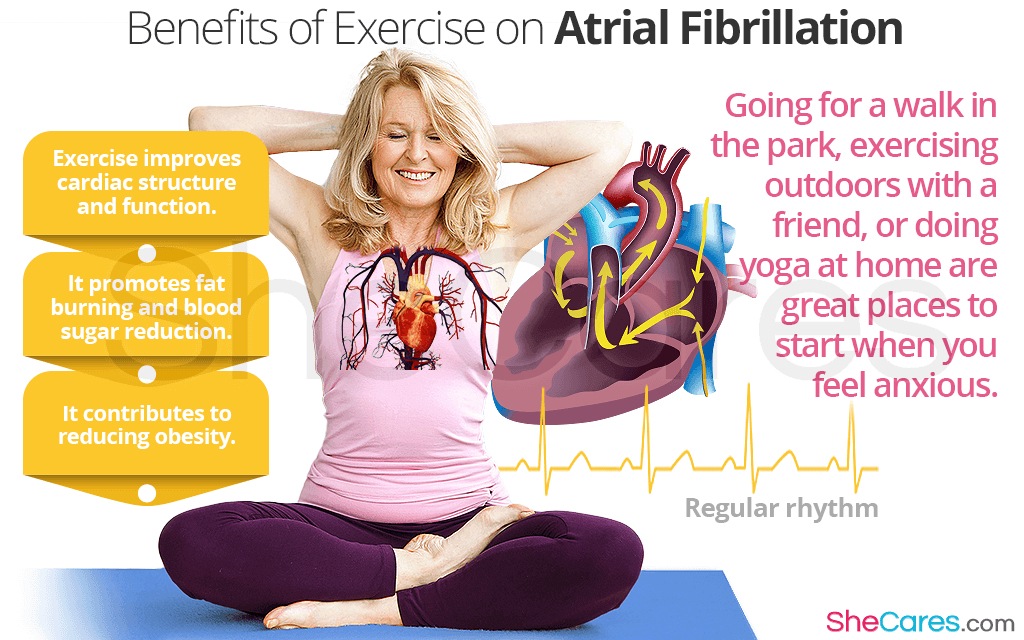Women with heart problems, such as atrial fibrillation (AFib), are frequently too scared to exercise as it might trigger an irregular heartbeat or worsen other unpleasant symptoms. However, studies have shown that regular exercise might be very beneficial in managing AFib. Read on to discover how you can safely remain active with atrial fibrillation.
Benefits of Exercise on Atrial Fibrillation
Women suffering from atrial fibrillation do not have to give up being active. Regular exercise has been shown to reduce the burden of AF in various ways:
- It reduces blood sugar and high blood pressure. This is particularity important for women suffering from diabetes and hypertension, which are some of the risk factors for atrial fibrillation.
- It promotes fat burning and can reduce obesity, which is a risk factor for atrial fibrillation.
- It improves cardiac structure and function, which is very beneficial since AFib is prevalent among women suffering from valve disease, coronary heart disease, and other heart dysfunctions.
- It triggers a release of serotonin and dopamine, which might help lessen the negative effects of prolonged stress and anxiety, which also are the risk factors for AF.
How Can I Start?
The key is to start slowly and find the type of physical activity you enjoy. Always do warm-up exercises first to allow your heart to adjust. Start with 5-10 minutes of the workout of your choice and then gradually increase its duration. Going for a walk in the park, exercising with a friend, or doing yoga at home are great places to start if you feel anxious.
According to the American Heart Association, the daily exercise recommendation in adults is 30 minutes of moderate-intensity aerobic activity at least five days per week. It includes any type of movement, such as walking, riding a bike, swimming, working out at the gym, etc. When your doctor gives you a green light to exercise, he might modify this recommendation according to your current health status, so it is important to ask.
Atrial Fibrillation and Exercise: What to Expect
For example, the calculations for a 50 year old person:
220-50=170 beats/minute (maximum heart rate)
50% of 170= 85 beats per minute
70% of 170= 119 beats per minute
So the target heart rate at 50 years old should be between 85-119 beats per minute during physical activity.
It is normal to experience dizziness, shortness of breath, and fatigue, especially if you are new to exercising. It might be safer to start with low-impact exercises, observe how your heart reacts, and compare your pulse with your target heart rate.
Report any alarming symptoms present during exercise to your physician, such pain or extreme fatigue. If chest pain or any other symptoms, such as confusion, pain in the arm, or slurred speech, continue after you stop exercising, seek an immediate medical help.
Things to Consider
Also if you are taking blood thinners for atrial fibrillation, avoid injury-prone sports, such as skiing or skating, as it might be more difficult to stop the bleeding. It is also important to remember that AF frequently does not give obvious symptoms, so regular check-ups with your doctor will monitor your heart's performance.
Regular exercise has been repeatedly included in the management plans for countless medical conditions, including atrial fibrillation, due to its numerous health benefits. Suffering from atrial fibrillation can cause a lot of distress, but exercising can help you alleviate it and lead a healthier life with a stronger heart.
